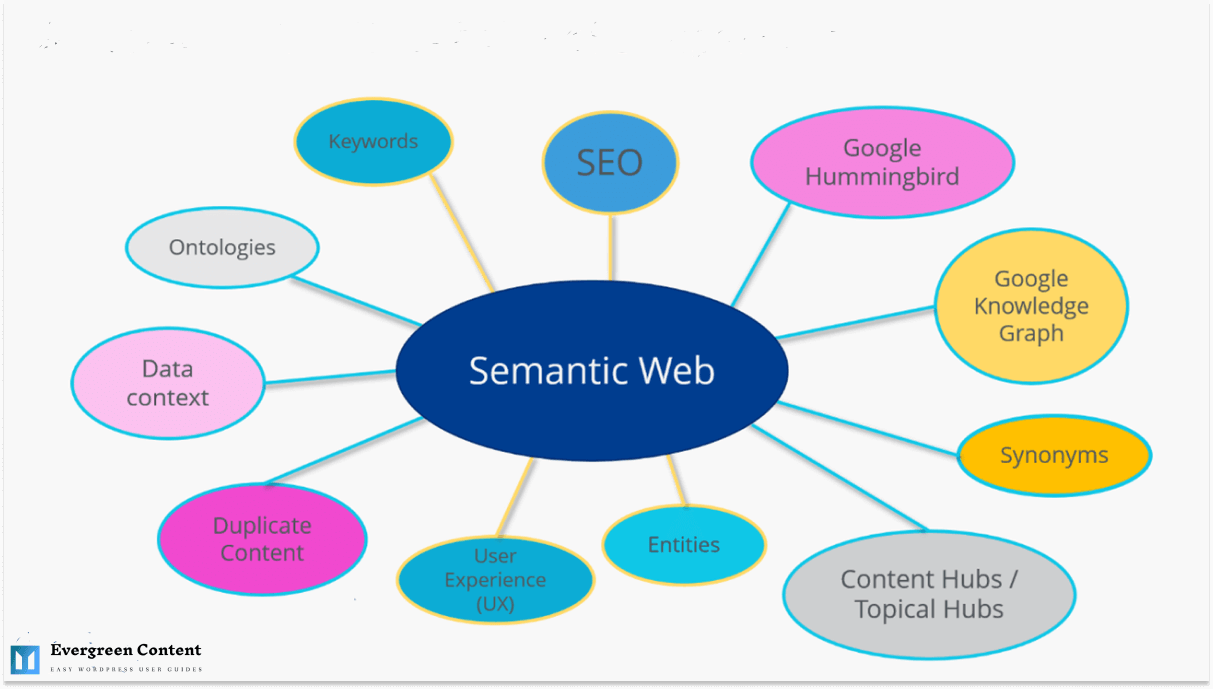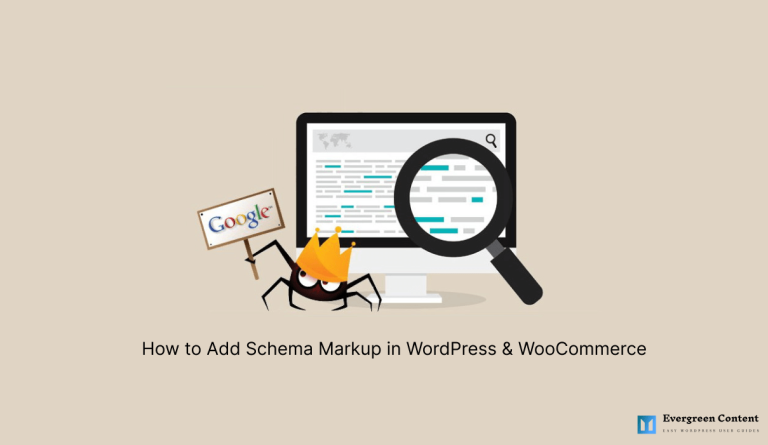All About Semantic SEO: Tips, Tools, and more
Content is the bread and butter of SEO– there’s no getting around that.
But in recent years, the focus has shifted from keyword-stuffed, low-quality articles to those that are rich in information and offer real value to readers.
This shift is due in large part to Google’s ever-evolving algorithm, which now places a greater emphasis on semantics in order to better understand the user’s intent.
In this post, we’ll take a look at what semantic SEO is, how it’s different from traditional SEO, and some tips-tricks and tools for optimizing your content for the new era of search.
What Is Semantic SEO?
Semantic SEO is the practice of optimizing your content for the meaning of words, rather than the literal meaning.
In other words, Semantic SEO is about creating content that is relevant to the user’s search query, rather than just using the right keywords.
This may seem like a small distinction, but it’s actually a pretty big deal. And it’s one that Google has been working towards for years.
The goal of semantic SEO is to create content that is:
- Relevant to the user’s search query
- Rich in information
- Easy to read and understand
Of course, this is nothing new. Google has always been focused on delivering the best possible results to users.
But the difference now is that Google has become much better at understanding the user’s intent and the meaning of words.
This has led to a shift in the way that we optimize our content for search engines.
In the past, the focus was on using the right keywords. But now, the focus is on creating content that is relevant and informative.
And this is where semantic SEO comes in.
How Is Semantic SEO Different From Traditional SEO?
Traditional SEO is all about using the right keywords. The goal is to use those keywords in your content in such a way that the search engines will recognize them and rank your content higher in the search results.
Traditional SEO often leads to keyword stuffing – the practice of cramming as many keywords into your content as possible, regardless of whether or not it makes sense.
Keyword stuffing is a surefire way to get your content penalized by Google. But even if you avoid keyword stuffing, traditional SEO still has its limitations.
The problem with traditional SEO is that it’s focused on the search engines, rather than the user.
In traditional SEO, the goal is to use the right keywords so that your content will rank higher in the search results. But this doesn’t always result in the best user experience.
Your content may be full of the right keywords, but if it’s not relevant or informative, users will quickly click away.
This is where semantic SEO comes in.
Semantic SEO is focused on the user’s needs. The goal is to create content that is relevant and informative, regardless of the keywords.
Of course, this doesn’t mean that keywords are no longer important. They are still a vital part of semantic SEO.
But the focus is on using keywords in a way that is natural and easy to read.
And this often results in better user engagement and higher conversion rates.
Tips for Optimizing Your Content for Semantic SEO
Now that we’ve looked at what semantic SEO is and how it’s different from traditional SEO, let’s take a look at some tips for optimizing your content for the new era of search.
- Give priority to user intent and experience
- Use Latent Semantic Indexing (LSI) Keywords
- Write for Humans, Not Robots
- Use Natural Language
- Structure Your Content in A Proper Way
- Optimize Your Images
Now, let’s get started!
Give Priority to User Intent and Experience
User intent and user experience are the things Google and other search engines give the most priority to.
User intent means focusing only on the queries your users are searching for. Give information and help them solve the problem with ease. No need to write long-form content if that does not match your users’ intent.
User experience means everything that ensures a smooth experience for your users to reach and read your articles. So, try to use super-fast hosting to lead your website in 1/2 seconds. Design a good-looking website with smart navigation. Keep enough white space and add relevant images to make your article more engaging.
Use Latent Semantic Indexing (LSI) Keywords
LSI keywords are words and phrases that are related to your main keyword.
For example, if you’re writing about SEO, some LSI keywords might be “link building,” “content marketing,” and “keyword research.”
Using LSI keywords in your content helps Google to better understand the topic of your article.
And this, in turn, can help your content rank higher in the search results.
Write for Humans, Not Robots
One of the biggest mistakes that businesses make is writing for the search engines, rather than for humans.
This often leads to content that is stuffed with keywords and difficult to read.
Remember, the goal of semantic SEO is to create content that is relevant and informative. So, write for humans, not robots.
Use Natural Language
When you’re writing for humans, it’s important to use natural language. This means using words and phrases that are easy to read and understand.
For example, instead of saying “The best way to improve your SEO is to focus on link building,” you might say “If you want to improve your SEO, you should focus on link building.”
The latter is much easier to read and understand. And it’s the kind of language that Google is looking for.
Structure Your Content in A Proper Way
The way that you structure your content can also have an impact on your SEO.
Google loves content that is well-organized and easy to read.
So, be sure to use headings and subheadings to break up your text. Keep enough white spaces. Use images.
And, when possible, use bullet points and numbered lists. This makes your content even easier to read and helps Google to understand the main points of your article with ease.
Optimize Your Images
Images can also help to improve your SEO.
Be sure to optimize your images by including keywords in the file names and ALT text. This will help Google to understand what your images are about and how they relate to your content.
Semantic SEO Case Study for New Users
Here we are going to share two different stories and learnings. Learn awesome Semantic SEO case studies from-
- Noodlecake Studios
- Hootsuite
1- Noodlecake Studios

Noodlecake Studios is a Canadian video game development studio located in Winnipeg, Manitoba. The company was founded in 2008 by brothers Ryan and Jesse Holowaty. Noodlecake Studios is best known for developing the Super Stickman Golf franchise, as well as other critically acclaimed titles such as Alto’s Adventure, Wayward Souls, and Lumino City.
In recent years, the company has shifted its focus to developing games for mobile devices. Noodlecake Studios has found success on the App Store and Google Play, with several of its games becoming top-grossing apps. The company has also released several games for the Nintendo Switch, including Golf Story and Super Mario Run.
Noodlecake Studios is a prime example of a company that has benefited from semantic SEO. The company’s website is full of high-quality content that is optimized for relevant keywords. As a result, the site ranks highly for many relevant searches, including “best mobile games” and “top indie game developers”. This has helped Noodlecake Studios to build a strong online presence and attract new players to its games.
Learnings Semantic SEO Practices from Noodlecake Studios
Noodlecake Studios wanted to improve its semantic SEO in order to increase its organic traffic and sales. They implemented a number of changes to their website, including:
- Ensuring that their title tags and meta descriptions were optimized for their target keywords.
- Using schema markup to help search engines understand their website content.
- Creating more informative and keyword-rich content.
As a result of these changes, Noodlecake Studios saw a significant increase in its organic traffic and sales.
2- Hootsuite

Hootsuite is a social media management platform that allows users to track and monitor social media activity across multiple platforms. The company was founded in 2008 by Ryan Holmes, and it is headquartered in Vancouver, Canada.
Hootsuite has over 16 million users, and it is used by major brands such as McDonald’s, Virgin, and Sony. The platform provides users with powerful tools for managing social media campaigns, analyzing data, and scheduling posts.
Hootsuite’s website is a great example of semantic SEO in action. The site’s content is optimized for relevant keywords, and as a result, it ranks highly for searches such as “social media management” and “social media marketing”. This has helped Hootsuite to attract new users and grow its business.
Learnings Semantic SEO Practices from Hootsuite
Hootsuite wanted to improve its semantic SEO in order to increase its visibility in local search results. They implemented a number of changes to their website, including:
- Optimizing its website for local keywords
- Creating location-specific pages
- Adding their business to local directories and review sites
Hootsuite saw a significant increase in its visibility and overall traffic in local search results.
Semantic SEO Tools for WordPress Website
As a business owner, you know that SEO is important to help potential customers find your website. But what about semantic SEO? Semantic SEO is about improving the meaning of your website for both users and search engines. And semantic SEO tools can help you do just that.
In this article, we’ll introduce you to five semantic SEO tools that can help you improve your website’s SEO. These tools can help you optimize your website’s content, improve your website’s structure, and more. So if you’re ready to improve your semantic SEO, read on.
| Names | Category | Best for |
| Surfer SEO | SEO and Content Marketing Tool | Identify the best content opportunities Let you create a comprehensive content strategy Provide guidelines for super-optimized content |
| SEMRUSH | Website Analyzer | Keyword research, SERP analysis, Performance tracking, and more |
| Rank Math | WordPress SEO Plugin | Best WordPress plugin to optimize your website for SEO |
| Ahreafs | SEO Tool | Keyword research, SERP analysis, Performance tracking, and more |
| Mangools | Keyword Finder | Keyword research, SERP analysis, rank tracking, and more |
FAQs on Semantic SEO
What is semantic search SEO?
What is semantic SEO structure?
What is Semantic search example?
Why is semantic SEO important?
What is Semantic webpage?
Is Semantic Web dead?
Does Google use the Semantic Web?
How is a Semantic Web different from a web?
Conclusion on Semantic SEO
Semantic SEO is the practice of creating content that is relevant and informative.
It’s about writing for humans, not robots. And it’s about using natural language that is easy to read and understand.
By following the tips above, you can optimize your content for semantic SEO and improve your chances of ranking higher in the search results.






